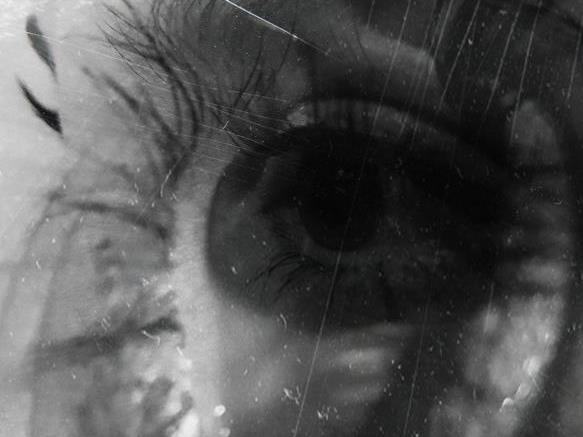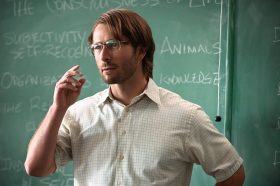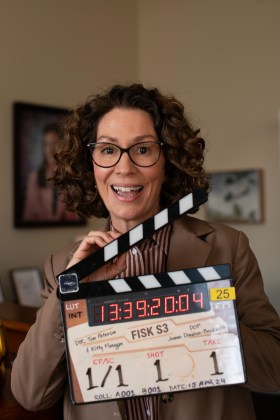Image: Escolatik is a monthly program related to students’ work.
From the web:
The Tabakalera, which houses the EQZE is a repurposed tobacco factory
The building contains exhibition halls, a multi-purpose plaza, a multi-purpose hall, a cinema theatre, a creation library called Ubik, media labs called Hirikilabs, spaces for art creation, a cafeteria called Taba, a residence for artists, and a four-star hotel, called One Shot Tabakalera House. It also hosts the headquarters of local culture institutions Kutxa Kultur, the Basque Film Archive, the San Sebastián International Film Festival, the Elías Querejeta Film School and the Etxepare Basque Institute.
2017 urtea ehun segundutan | 2017 en cien segundos from Tabakalera on Vimeo.
EQZE is taking shape based on the fields of knowledge of the three film institutions that are taking part in its conceptualisation on the initiative of Gipuzkoa Provincial Council: the Basque Film Archive, the San Sebastián Film Festival and Tabakalera, International Centre for Contemporary Culture. As a result it benefits from the dynamic cultural and professional ecosystem at Tabakalera, which makes it easier for its agents to pass on their knowledge and experience.
Making a play on words, we could say that this school doesn’t offer academic credits but creates film credits. The Film Archive, the Festival and Tabakalera are not teaching institutions; they are film institutions. That is why the school is not strictly speaking a teaching project either, it’s a film enterprise that takes the form of a school: a kind of transit area between training and professional life.
It is practically driven, and supports filmmakers, curators and conservationists. Students are assumed to have a tertiary degree or proven production experience.
—-
Adrian Martin writes:
Imagine this. The students at a film school assemble in a lecture room at 9:30 am. They then take copious notes during an intensive four-hour seminar from a visiting lecturer on ‘The Filmmaker’s Thinking: Practice and Theory’. This seminar, in fact, occupies the same time slot for the entire working week; and it is delivered in English, which is not the first language of most students present.
After lunch, it is presentation time for two or three hours: in a cosy, overflowing lounge, the students, accompanied by their teachers, summarise their microscopic investigations into the archives of film festivals and cine-clubs; they report on the ongoing restoration of two little-known movies from the 1920s, which each exist only in a single, flammable nitrate print; and they discuss their collaboration with a historic organisation of feminist film distributors in London.
Then it’s time for these students to scurry into separate technical rooms, working on their creative projects. Visiting filmmakers and multimedia artists also buzz around, giving their advice. Evening comes: upstairs in the same building, a handsomely equipped, dedicated cinema space (also open to the public, which arrives in droves) runs the latest session of a retrospective devoted to Agnès Varda, screening superb digital restorations of her past masterworks – and some of the students have been involved in the programming and organising of this season. Thus, a day at film school ends around 10 or 11pm. And the following morning at 9.30am, it all starts over …
This is not the pipe dream of a cinephile. It is an accurate record of time spent, earlier this month, at the new EQZE Film School in San Sebastián in Spain, named after the famed producer Elías Querejeta (1934-2013). Full disclosure: I was the person talking at those students in English for four hours a day. I had been invited by the school’s director, the scholar and screenwriter Carlos Muguiro. He has been granted the latitude – and the funding – to base the school’s operations on a wide-ranging vision of how a genuine ‘film culture’ should operate: as a closely interwoven field of activities involving both ideas and practical know-how, historical critique and free experimentation, administrative expertise and Utopian schemes. Muguiro’s personal mantra is: ‘We must bring the cinematic past alive, for the future’.
It is the first year of operations for EQZE (the academic calendar runs, European style, from one September to the next – geared to coincide with the San Sebastián Film Festival). A rigorous admissions process has led to a diverse intake: I spoke to students who had traveled from Colombia, Mexico, Britain, the US and Argentina to take advantage of what EQZE offers. Some are already quite accomplished artists; others are beginning their careers as curators or programmers in art events and film festivals. Although there is a strong emphasis on excavating the diverse traditions of Spanish cinema, there is an equally strong flavour of cosmopolitan internationalism: even the EQZE website offers extensive information in English (see http://www.zine-eskola.eus/en).
Muguiro’s plan for EQZE is based on what he calls the ‘three tenses of cinema’ – or perhaps we could rename it, Lawrence of Arabia style, the three pillars of wisdom. These pillars of activity are:
filmmaking,
film preservation,
and film curating.
There is a strong ‘hands on’ element across all the interconnecting strands – whether that is the material strip of celluloid film, or the precious, handwritten letters from filmmakers (held in the San Sebastián Film Festival archive) that can only be handled while wearing the appropriately scientific white gloves! 15 people are enrolled in each speciality, but there is also an obligatory, common course content for all 45 students: ‘The Filmmaker’s Thinking’ for instance, was part of that.
Muguiro draws much inspiration (and heart) from the manifesto-like book by the French educator Alain Bergala, The Cinema Hypothesis: Teaching Cinema in the Classroom and Beyond (available in English translation online, and also from the Austrian Film Museum), with its vision of the creative, artistic spirit married to a deep appreciation of cinema’s many forms and possibilities.
Need I say how intoxicating this glimpse of EQZE has been to an Australian-born citizen of cinema? Throughout my life as a critic and teacher, I have observed the often very precarious place that ‘thinking’ or theory (call it what you like) has in Australia’s institutions of practical film training. (Screenhub has recently reported on the dire situation at, for example, Flinders University.) Often, it appears that the ‘ideas’ component of the curriculum – whether that involves close critical analysis, a sense of film/media history, or any political discussion of cultural work – is the first thing to be turfed out in any departmental restructuring. This merely reinforces all the crippling barriers that separate practice from theory in Australian film culture – and it inevitably impoverishes the type of films and TV programs that do get made.
A personal PS: in the roughly 35 years that I worked as a film critic in Australia, I was invited to speak at the nation’s various film training schools less than half a dozen times in total. In Spain, I’m given a platform for 4 hours a day.
© Adrian Martin, January 2019
Note: Admissions for the EQZE 2019-2020 course open 1 February.
—





